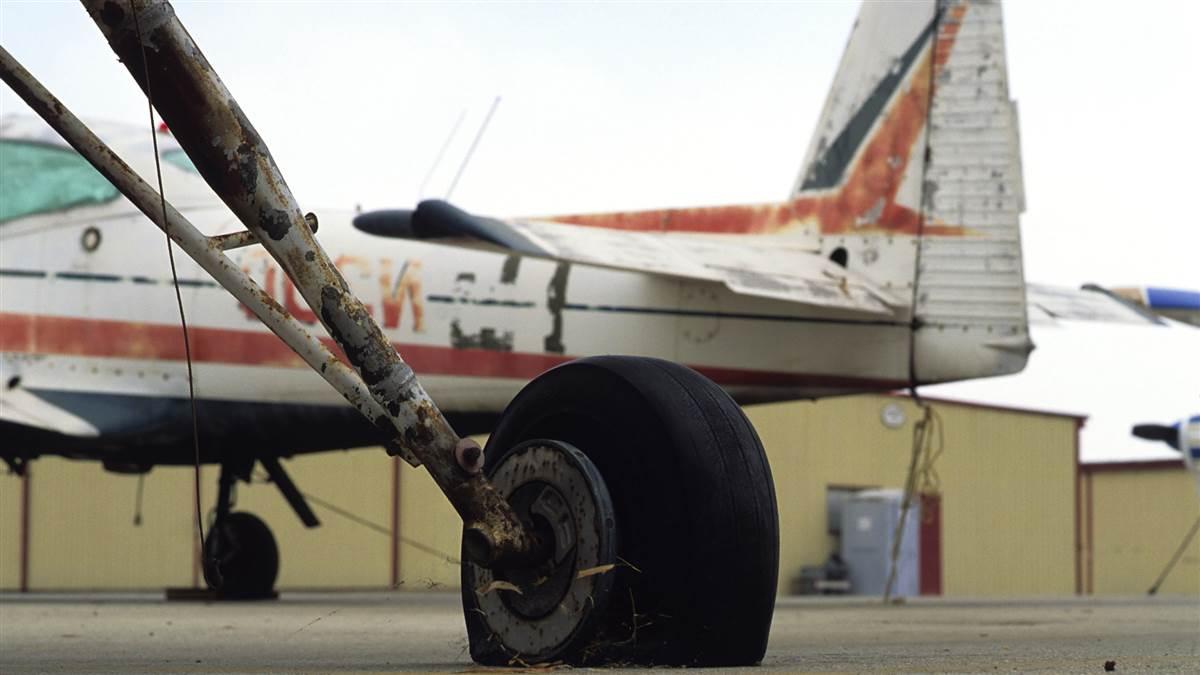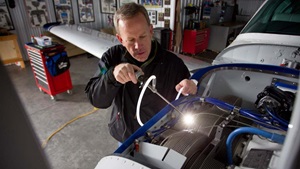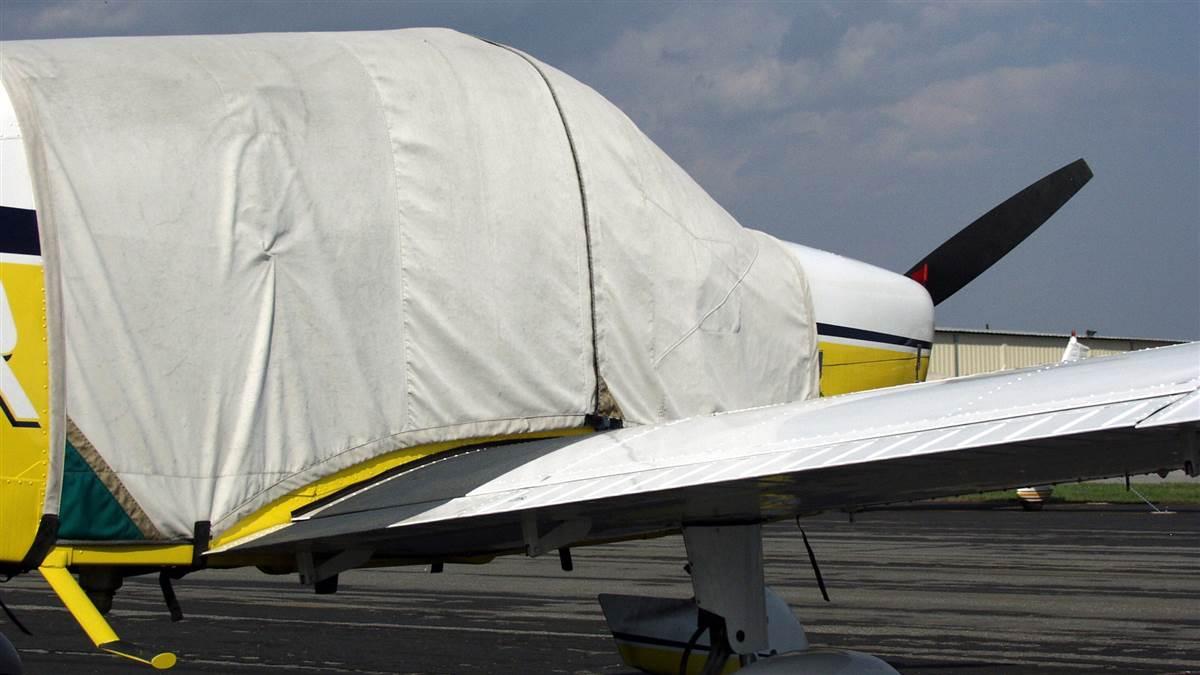Other Aging Factors
Safety Spotlight: Aging Aircraft

In addition to flight activities and maintenance and damage history, there are other factors that contribute to aircraft aging, such as regional climates, hangars, inactivity, and critters.
Regardless of your aircraft's regional location, the sun's UV rays can damage its paint, windows, upholstery, tires, and even avionics.
Climate
Regional climates are a factor in the aging process. For example, exposure to sunlight can affect plastics, paint, and fabrics, while moisture and airborne contaminants can harm metals. Review the various regions to see the impact of climate exposure and recommendations for protecting and inspecting your aircraft.
Tip: Regularly cleaning aircraft can help mitigate the effects of regional climates.
| Region | Winter | Summer | Impact | Recommendation |
|---|---|---|---|---|
| Northwest | Cool and wet near the Pacific coast with snow in the mountains | Warm and dry | Damp, salty air near the coast can be highly corrosive | Regularly inspect aircraft for corrosion |
| Southwest | Cool and very dry with snow in the mountains | Warm and dry—hot in the desert regions and some rain in the mountains | Possible sun damage to the paint and interior—tires and rubber fluid lines can also become dry and rotted | Protect aircraft from the sun |
| High Plains | Very cold and dry | Warm and dry with occasional thunderstorms | Engine wear due to cold starts | Regularly inspect aircraft for corrosion |
| Southern | Mild with rain near the Gulf of Mexico | High heat and humidity mixed with heavy rain showers and thunderstorms near the Gulf of Mexico | Salty, humid air near the Gulf of Mexico can quickly cause corrosion—sun damage can also occur | Protect aircraft from the sun and regularly inspect for corrosion |
| Midwest/Ohio Valley | Fairly cold with ample snow near the Great Lakes | Hot, humid, and rainy | Corrosion on aircraft based closer to Great Lakes | Regularly inspect aircraft for corrosion |
| New England/Mid-Atlantic | Heavy snow and rain | Warm and humid with heavy rain showers | Corrosion from water contamination | Protect aircraft from the elements and regularly inspect for corrosion |
| Southeast | Cool and mild, mixed with occasional heavy rainstorms | Hot, humid, and rainy | Salty, humid air can quickly cause corrosion | Store the aircraft securely and regularly inspect for corrosion |
| Northern Alaska | Subfreezing temperatures with moderate to frequent snowfall | Cool temperatures with mild precipitation | Engine wear due to cold starts | Follow manufacturer guidelines for cold weather operations |
| Southern Alaska | Cold with frequent snowfall (mostly rain with some snow in the Southeastern region) | Mild temperatures and frequent rain | Corrosion from water contamination | Protect aircraft from the elements and regularly inspect for corrosion |
| Hawaii | No appreciable difference between winter and summer climates, with mild temperatures, humidity, and moderate rainfall year-round; storms are infrequent and typically localized; vast changes in terrain cause variations in weather from the moist windward side to the drier leeward side of the mountains; strong and gusty winds are common | Corrosion from salty air and rain | Store the aircraft securely and regularly inspect for corrosion | |
Hangars
Storing your aircraft in a hangar can mitigate regional climate factors, but not all hangars provide the same amount of protection.
Poor condition—A damp, humid, and leaky hangar can be just as bad as—if not worse than—storing an aircraft outdoors. The trapped moisture can create a highly corrosive environment.
Good condition—If an environmentally controlled hangar is not an option, focus on finding a hangar with good ventilation and a paved floor. Pavement will help prevent moisture from rising up from the ground, which creates a damp and corrosive environment.
Inactivity
Hangared or not, inactivity can contribute to premature aging.
During periods of inactivity, corrosion can develop inside the engine due to condensation and loss of protective oil on the surfaces of moving parts, potentially leading to damage during the next engine start.

Borescopes provide a high-quality method of inspecting an engine's cylinders and other internal components. Consider having your maintenance shop perform a borescope inspection of your aircraft's engine to detect corrosion from inactivity. Refer to your aircraft's engine manual for more information on short- and long-term storage.
Tip: If you won’t be flying for a long period of time, follow the manufacturer’s procedures for long-term storage.
 Critters
Critters
Birds and mice can destroy an aircraft’s insulation and wiring. In addition, their nests and droppings can cause corrosion.
Use foam blocks or plugs in the aircraft’s inlets and open areas (cowling, exhaust, behind controls surfaces, etc.)—just be sure to remove them before flight. Keep the flight controls in a neutral position when securing the aircraft to discourage access to open holes.
Tip: Some aircraft manufacturers provide additional guidance on protection against birds, rodents, and other critters.
Putting It All Together
The true age of an aircraft is influenced by several factors:
| Younger True Age | Older True Age |
|---|---|
| Good maintenance history | Poor maintenance history |
| No damage history | Some damage history |
| Not used for flight training | Used for flight training |
| Stored in a hangar | Stored uncovered outdoors |
Talk to your mechanic about any aging factors that might have affected—or still affect—your aircraft. In some cases, special care and maintenance may be necessary.
Consider having your maintenance shop perform a borescope inspection of your aircraft's engine to detect corrosion from inactivity. In most cases, the next best thing to using a hangar to store your aircraft is a breathable aircraft cover, which can help protect your aircraft against the elements. To help prevent windshield damage caused by the cover, some owners place a few tennis balls under the cover to prevent it from touching the windshield.
In most cases, the next best thing to using a hangar to store your aircraft is a breathable aircraft cover, which can help protect your aircraft against the elements. To help prevent windshield damage caused by the cover, some owners place a few tennis balls under the cover to prevent it from touching the windshield.